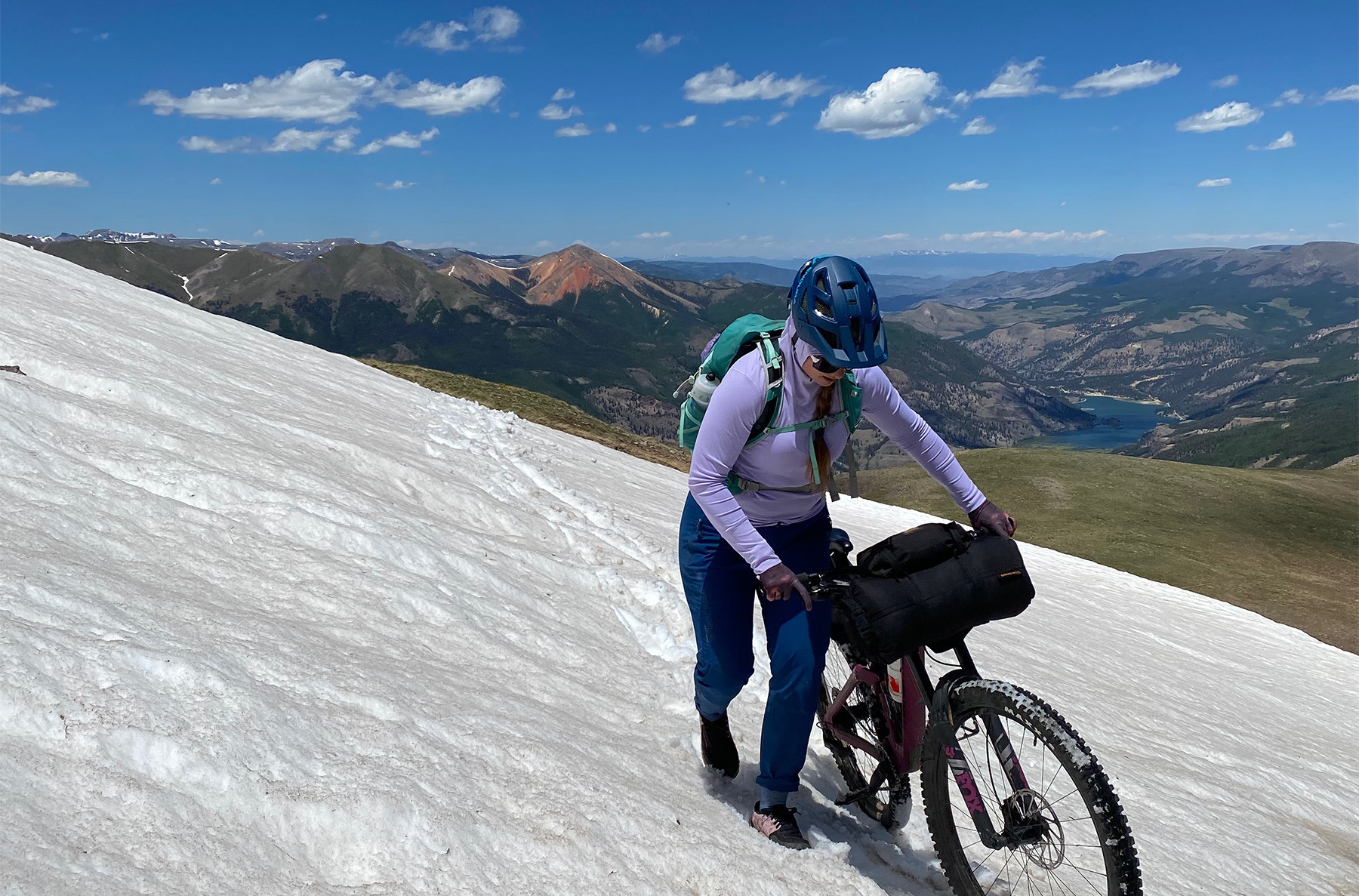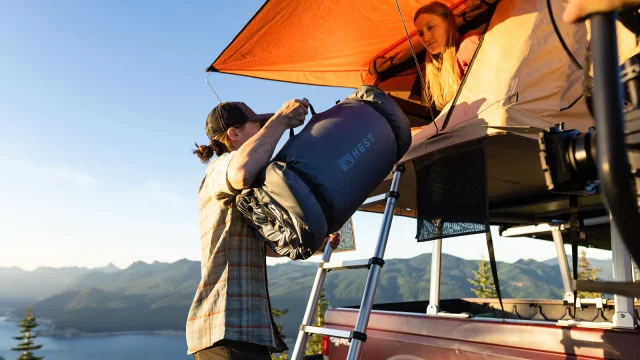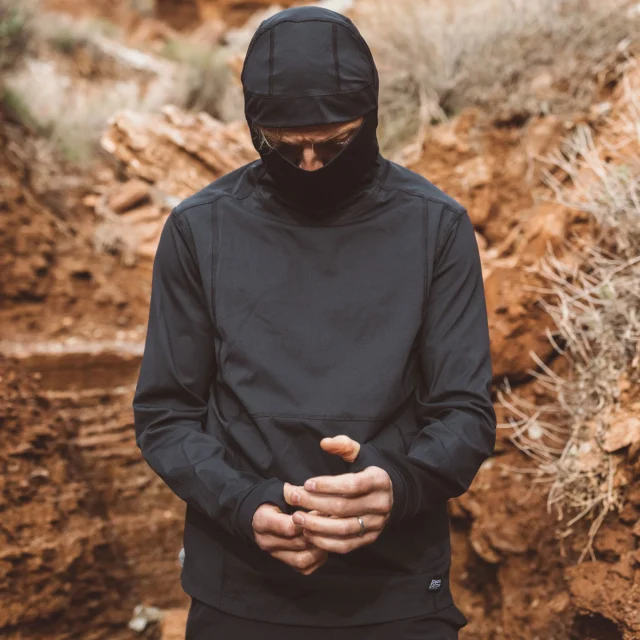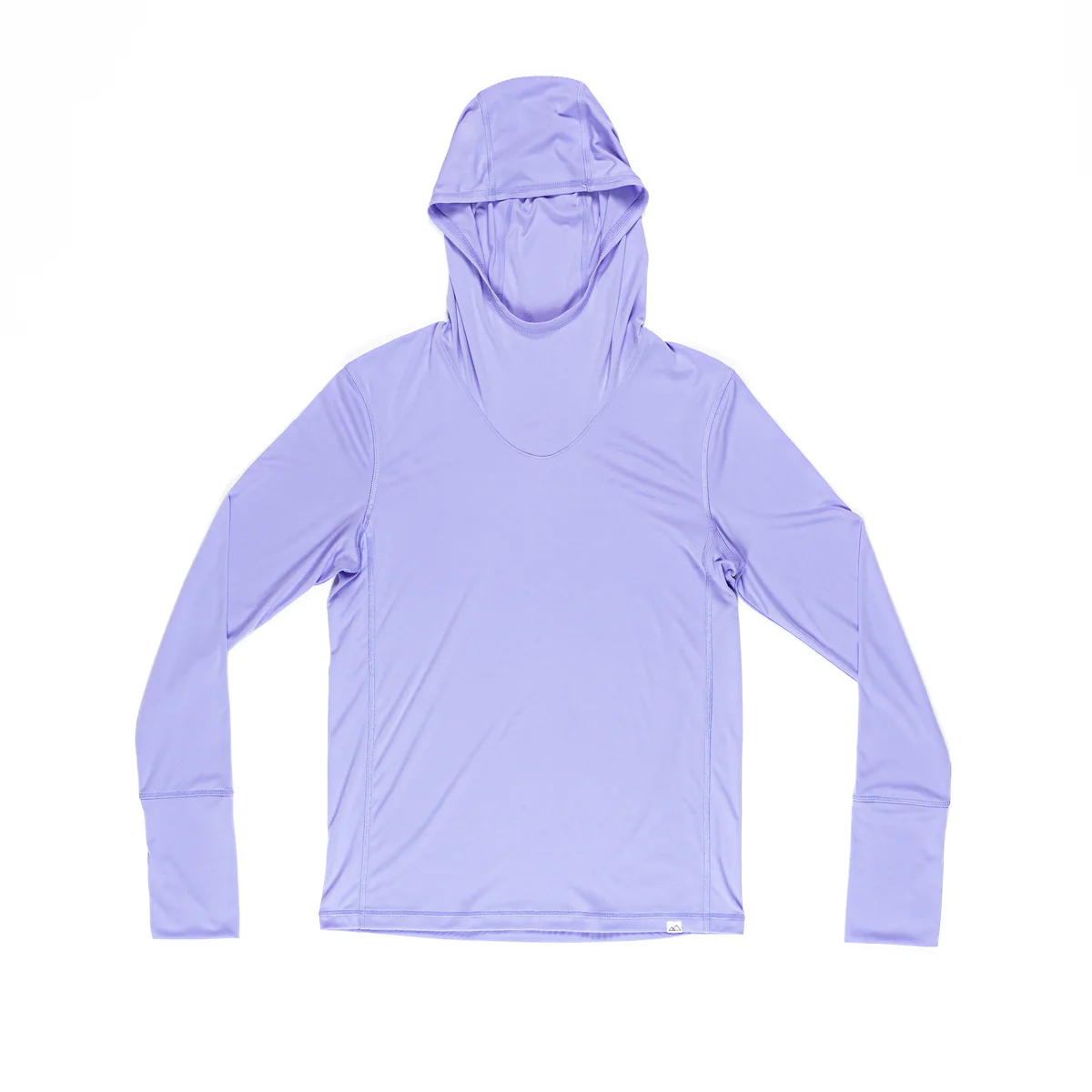
Intro
Most of our reviews are pretty long — and take a long time to produce — because we want to provide enough info for you to actually determine whether the gear we tested will work well for you.
But we get asked to check out an increasingly wide range of products, and sometimes, we just want to tell you about something we’ve been using and loving lately.
So that’s where this monthly series — Stuff We Like — comes in, where we keep you current on a broad range of stuff we’re currently digging.
And if there’s something you love that you think we ought to check out, drop us a note in the comment section below.
HEST Foamy Wide
MSRP: $349
David: I’ve now been through a few different iterations of the camper setup for the back of my truck, with different storage and mattress configurations, and the HEST Foamy Wide is the nicest of those mattresses that I’ve tried to date.
The Foamy (and the Wide version that I’ve been using) is a memory-foam car-camping mattress with a removable and washable cover (the lower half of which is waterproof) and a roll-up design with handles for portability. The material that’s used to wrap the mattress for transport and storage serves double duty as a “welcome mat” (basically a clean and dry place to put your shoes on and the like), and there’s a side pocket for small items like a phone and keys. And finally, both the Foamy (25’’ x 78’’) and the Foamy Wide (30’’ x 78’’) have clips on the sides to link multiple Foamys together to make a wider sleeping platform.


The design is not conceptually all that groundbreaking, but it is well-thought-out. The quality of materials used in the Foamy seem especially nice. The cover is soft and comfortable on the top side while being impressively durable and dirt-resistant; the waterproof lower side is much tougher yet, and helpful if you’re using the Foamy on damp or dewy ground. And the foam used for the main structure of the mattress is on the softer side while still being supportive. It’s very comfortable and also insulates well (HEST claims an R-Value of 8.8) but hasn’t felt hot or sweaty even on some very, very warm nights in the truck.
HEST recommends the Foamy for applications where it’ll be used on a platform, with their Sleep System being intended for use directly on the ground. I’ve primarily used the Foamy on a set of raised slats to add a little give to the platform and add an air gap for insulation, but have also spent a few nights on it just on the ground and it’s plenty comfortable there as well. The added inflatable layer of the sleep system would probably help smooth out rough ground better, and it bumps the stated R-Value up to 11.8.
It is worth noting that, while the Foamy is quite easy to roll up in general, if you’re trying to get it as small as the 12’’ diameter that Hest states for the stowed configuration, you’re going to need to put quite a bit of effort into rolling it very tightly and compressing the foam a lot as you do so; rolling it to more like 16’’ or 18’’ in diameter is pretty easy, but it’s quite possible to end up even bigger than that if you’re careless about it. Just bear that in mind in thinking about how you’re going to use and store the Foamy. But if you’re looking for an especially comfortable and durable car-camping mattress, it’s a very good one.
Five Ten Freerider Pro Canvas Mountain Bike Shoes
MSRP: $160
Kara Williard: Over the years, I have gone through several pairs of Five Ten Freerider shoes. I have always loved the fit, grip of the sole, and the look and colors. For the past six months or so, I have been spending tons of time in the Freerider Pro (canvas version), and it has proven a bit more durable, but still just as comfortable and grippy as the regular Freerider. This version of the Freerider Pro has a bit less canvas than the regular Freerider, an impact-resistant toe box, and a slightly stiffer sole. All of these features not only make it more protective, but it has so far been notably more durable than the regular Freerider.
The Freerider Pro feels great on and off the bike, and while the sole is pretty stiff and supportive, the shoe also walks really well. I have become even more aware of this feature after some grueling time spent hiking my bike recently.


Among all the bike shoes and soles I have found myself hiking in, the Five Ten Stealth Phantom rubber feels the best when hiking up large rocks, or worst yet, loose sand atop large rocks. It grips well whether things are wet or dry. And then when it comes to grip on the pedals, I find the Stealth sole to offer just the right level of traction; I can still reposition my foot when needed, but I also know my foot won’t slide around when I don’t want it to.
There are also very few rides around Crested Butte that don’t require a stream crossing (or five), and after a pretty big winter, these streams have been ripping. I have found the Freerider Pro to be fairly quick to dry and good at shedding moisture. After about 20+ stream crossings that left my pair thoroughly soaked, I have found them to hold up well and maintain their fit and comfort.
The Five Ten Freerider Pro comes in a canvas version (which is what I have been testing), and a version that uses synthetic materials for the upper. While I can’t speak to the differences between the two, the canvas version has held up after 800 or so miles, and while it looks pretty dirty, I can tell I still have a lot of miles left in it.

The sole is also relatively unscathed, which was always the first thing to give out in my regular Freeriders. For more on the synthetic Freerider Pro, particularly the version that uses recycled polyester, see David Golay’s full review.
In regard to fit, I have always found Five Ten shoes to fit true to size, and that seems to continue with the Freerider Pro. I would describe them as medium-volume shoes, with a fairly roomy toe box. This is partially why I can tolerate a lot of hiking in this shoe, and the laces offer enough adjustment for when I want to cinch down my foot.
The Freerider Pro is $50 more than the regular Freerider, but after using it a lot this summer, I think that’ll be well worth it for the added durability and overall performance.
WNDR Alpine Phase Series Apparel
MSRP: $65 (Tee); $125 (Hoodie); $135 (Pant)
Luke Koppa: Listeners of GEAR:30 will know that WNDR Alpine recently launched their first line of technical apparel, dubbed the Phase Series. After sitting down with WNDR Alpine’s Matt Sterbenz and Beyond Surface Technologies’ Matthias Foessel, I was really intrigued by the collaboration between the two brands. Listen to that conversation for the whole story, but to summarize: BST used the same algae-derived oils that WNDR Alpine uses in parts of their skis and snowboards to develop a non-petroleum-based fiber treatment that increases moisture-wicking performance. The pieces are also made with alternative fibers, including bio-based nylon for the Advect Hoodie, recycled nylon in the Disperse Pant, and recycled polyester in the Stasis Tee.
Now, the fact that these pieces feature a wicking finish is less novel than the finish itself (these sorts of finishes are fairly common), but I was still curious to see how they’d perform. I’m early on in my testing, but so far, I’m really liking them.




The Stasis Tee, in particular, offers a really nice blend of wicking and breathability while also being extremely soft and comfortable. Often, fabrics that move moisture really well don’t feel all that soft, but the Stasis Tee’s fabric (74% recycled polyester / 19% Tencel / 7% elastane) feels almost like a softer merino wool or brushed cotton, yet it doesn’t absorb or hold as much moisture. That little bit of Tencel seems to be going a long way in terms of on-skin comfort — it feels much more like a Tencel / Lyocell / Modal fabric than one that’s primarily polyester. The fabric is also very light and thin, and despite having it in my favorite color of black, it’s been great for biking and fishing in the warm, sunny weather we’ve been experiencing lately. I was most impressed by its performance when I abandoned my usual strategy of “start cold, get hot” on an early-morning bike ride. I ended up doing the entire ride with a heavy cotton hoody over the Stasis Tee — both of which were under heavy cotton overalls. To my surprise, I was pretty dry at the end of the ride, despite producing lots of sweat on the climb. I also like the middle-of-the-road fit, which I think should work well for most folks.
The Disperse Pant uses a stretch-woven, lightweight, softshell-esque fabric that feels cool to the touch and dries really fast. It’s one of the few pants I’ll wear when it’s over 70°F / 21°C. I’d call its fit “slim but not skinny” — it tapers a bit, but not nearly as much as dedicated bike pants. The look is very understated and sharp, while the stretch of the fabric and the articulated knees provide enough mobility for biking, hiking, and climbing. It features a pretty standard chino-style 4-pocket layout, but with the addition of a small mid-thigh pocket that’s sealed with an “invisible” zipper. Lastly, it has a low-profile, integrated belt that I’ve found pretty functional and not very noticeable, though I appreciate that its belt loops still leave me the option of adding my own belt. Overall, the Disperse Pant is a great option in the “looks normal but can do outdoorsy or active things” category, especially for those looking for something on the lighter / more breathable end of the spectrum.




Wild Rye Sawyer Sunshirt
MSRP: $89
Size Tested: 8
Kara: Sun protection has become an increasing priority this summer, and for certain missions, I need a shirt that’s going to offer sun protection + a whole lot more. I want a shirt that offers excellent wicking, won’t smell during sustained use over a couple of days, will help regulate temperature, and will also offer some warmth and protection atop windy and cold ridges. Plus, it should be comfortable, and ideally, cute.
A couple of weekends ago, I brought the Wild Rye Sawyer Sunshirt along on a bikepacking trip, and it offered all of the above, making it the perfect shirt for this sort of adventure. After two very long days on the bike, it proved to be super soft, helped cool me down, and provided great protection from both the sun and cold, gnarly winds. It also did a great job of wicking moisture, and wasn’t unreasonably smelly after pedaling (and hike-a-biking) 80ish miles over two days. I also liked that I could wear the hood beneath my bike helmet to keep the wind out of my ears.



The Sawyer shirt has a very silky feel to it, made from 100% recycled polyester; it’s not a more fibrous or cotton-feeling material, like most of my other sun shirts. I think this makes it the best option for really hot and sunny days, and it feels super comfortable and never clingy, itchy, or stifling.
The Sawyer Sunshirt is rated at UPF 50 and offers some other nice details, such as a hole in the hood for a ponytail, thumb holes at the wrist cuffs, and is naturally deodorizing. It runs true to size, as I have found an 8 from Wild Rye to fit me pretty well (and consistently) from their pants to their shirts. I also appreciate that there is a little extra length in both the sleeves and torso.
This is a highly versatile shirt, and I have found myself grabbing it for everything from biking and hiking, chilling riverside, or wearing it around town. If you are looking for a comfy, cooling, protective shirt that will work for a variety of activities, the Wild Rye Sawyer Sunshirt is a pretty great option.
Rotor SRAM Direct Mount Oval Chainring
MSRP: $90
Dylan Wood: I’ve always been curious about how an oval chainring performs, and I finally got the chance to test one this summer. I’ve spent the past few months with Rotor’s 32-tooth SRAM Direct Mount Oval Chainring on my Santa Cruz Megatower V2, and I don’t think I want to go back to a round chainring.
The claimed advantage of an oval ring is a smoother, more efficient pedal stroke. The ring is shaped so that it is effectively larger where your pedal stroke is most powerful and smaller where there are “dead spots” in your pedal stroke. It didn’t take long to test how this feels on the trail — Crested Butte is notorious for steep, punishing climbs. Recovering from a minor knee injury carried over from the ski season, I immediately noticed that my pedal stroke felt smoother overall. It’s not night-and-day versus a round chainring, but it is certainly noticeable.

Installation is fairly easy and the amateur bike mechanic should have no problems getting this new ring on your bicycle, so long as you know how to remove your drive-side crank arm. From there, removing 3 bolts with a T25 key and replacing your current SRAM GXP-compatible ring with Rotor’s Oval ring is about as easy as it gets. Rotor also makes different versions of their Oval rings compatible with different drivetrains / crankarms, and offers their rings with different offsets (in my case with a SRAM GX Eagle drivetrain, a 3 mm offset ring is what I needed). I also have a OneUp Bash Guide on my Megatower, and the chainguide part was easy to move into place and remains effective even with an oval ring. However, it’s worth noting that the wider parts of this 32t oval chainring protrude past the bash guard under my bottom bracket, making my bash guard effectively useless.
Lastly, it’s worth mentioning that Rotor offers a free exchange for a round chainring if you aren’t sold on their oval rings within 30 days. If you’ve been hoping for a relatively cheap upgrade to help your pedal stroke feel smoother, I’d definitely recommend experimenting with an oval chainring.
KAVU Alder Lake Tote
MSRP: $55
Kristin Sinnott: I have too many totes. Way too many. But I’m still a sucker for a good tote and the Alder Lake Tote is exactly that. It is also the only mesh tote I own. I’ve been using it for the past month, mainly for towels, swimsuits, and other swim-related stuff. With a 40L capacity, the tote holds quite a bit and while most totes become a black hole when stuffed to the brim, the mesh design of the Alder Lake Tote keeps the contents of the bag visible. It has an internal mesh pocket that works well for a phone, wallet, and other small items. And the exterior of the tote has several drop-in pockets that work well for swim goggles, sunglasses, and other smallish items.


Kula Cloth
MSRP: $22.95
Kara: I spend a lot of time outside and am always looking for convenient peeing solutions, as someone who prioritizes sanitation but also doesn’t want to feel burdened every time I have to find a place to squat. I already feel like it can be kind of annoying to pee as a woman in outdoor spaces, so the easier it is, the better.
My friend gave me a new Kula Cloth a few months ago; I was initially skeptical, and, to be frank, a little turned off by the idea of a reusable pee cloth. But this spring and summer I have been using a Kula Cloth a lot, and it has proven to be a very effective and useful answer to the problems and issues that can occur with lots of time in the backcountry / when peeing outside.
The Kula Cloth is a dual-sided, antimicrobial, reusable pee cloth, intended to keep things dry and clean for pretty much any activity. To keep things sanitary, Kula uses a silve-ion-treated, antimicrobial, and highly absorbent fabric on the absorbent side, and a waterproof fabric on the other. It’s quick-drying and features a snap and loop to easily hang it up to dry at camp.


For anyone who squats to pee and needs an easy, clean, and effective solution, I would highly recommend investing in a Kula Cloth for your adventures. You can read more about it — and have any additional questions answered — here.
KAVU Chilli Lite Short
MSRP: $70
Jed Doane: The Chili Lite short is a KAVU original, first introduced in 1995. Made of 6-oz heavy-duty cotton, they’re billed as a do-everything, versatile short for town to trail. In my experience, they definitely live up to that claim. They’re well-designed, comfortable, and work as hiking shorts or loungers.
The half-moon pockets took a little getting used to, but they’re quite roomy, feature an easy velcro closure in the rear pockets, and generally make for a comfortable design. I’m normally less of a fan of built-in belts, but the Chilli Lite Shorts have a heavy-duty nylon belt that stays out of the way and is easy to use. They feature a classic baggy fit, which pairs well with a shorter inseam and makes for a durable pair of shorts that is easy to move in despite the heavy-duty fabric.
I’ve worn these almost daily all summer, and have loved their comfort and durability. They’ve also handled two washes without significant size changes and hang-dry very quickly.

